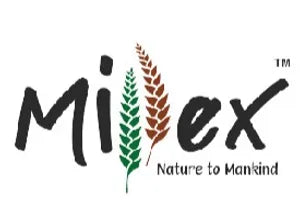What Is the Glycemic Index of Finger Millet?
Does high glycemic index affect your health? Yes!! Foods with a high glycemic index rapidly increase blood sugar and may cause health problems. A low-GI diet may help prevent and control diabetes and cardiovascular disease. A low GI diet can also help people maintain their weight as part of a healthy diet. Are you looking for the best food that has a low glycemic index value? If yes, then definitely it will be a millets. Each millet has different unique glycemic values. Here, you can explore the glycemic index of finger millet.
What is Finger Millet?
Finger millet, also known as Ragi, is a significant millet cultivated in various regions of India and Africa. It is renowned for its nutritional richness and health benefits, making it a valuable addition to diets, especially for individuals with specific health conditions like diabetes. One crucial aspect of assessing the impact of finger millet on health is understanding its glycemic index.
What is the Glycemic Index?
The glycemic index indicates how quickly a particular food raises blood sugar levels after consumption. Foods with a low GI are digested and absorbed more slowly, leading to a gradual increase in blood glucose levels, which is beneficial for managing blood sugar levels, especially for individuals with diabetes.
Glycemic Index of Finger Millet
Finger millet has been found to have a low glycemic index, making it a favorable choice for individuals concerned about blood sugar control. Glycemic index of finger millet is approximately 50-65 which controls rise in blood glucose levels compared to high-GI foods. Ragi has a GI of 71 when raw but 55 when cooked, making it low to medium GI.
Health Benefits of Low GI Foods
Consuming low-GI foods like finger millet can offer several health benefits, particularly for individuals with diabetes or those aiming to manage their blood sugar levels effectively. Finger millet gi index reduces postprandial blood glucose spikes, and enhance insulin sensitivity.
Incorporating Finger Millet into the Diet
Finger millet can be incorporated into dishes such as rotis, dosas, porridge and baked goods such as cookies or pancakes. Its versatility in cooking makes it a convenient and nutritious option for individuals looking to diversify their diet with low-GI foods. If you are a busy individual looking to include millet in your daily life, buy a millet health mix from Millex. This ready-to-use mix makes for quick and easy preparation, saving time and effort in the kitchen while still providing the nutritional advantages of millet.
The Bottom Line
Finger millet is a nutritious and low-GI grain that can be a valuable addition to the diet, especially for individuals concerned about blood sugar management. Understanding the ragulu glycemic index sheds light on its impact on blood glucose levels, making it a beneficial choice for those seeking to maintain stable blood sugar levels and overall health. Buy Millex and elevate your daily meals with the wholesome goodness of millet health mix. Whether used for smoothies, soups, or baked products, the Millex millet health mix provides an easy method to incorporate this nutritious grain into your busy lifestyle. It supports your health and nutritional goals without any trouble.

